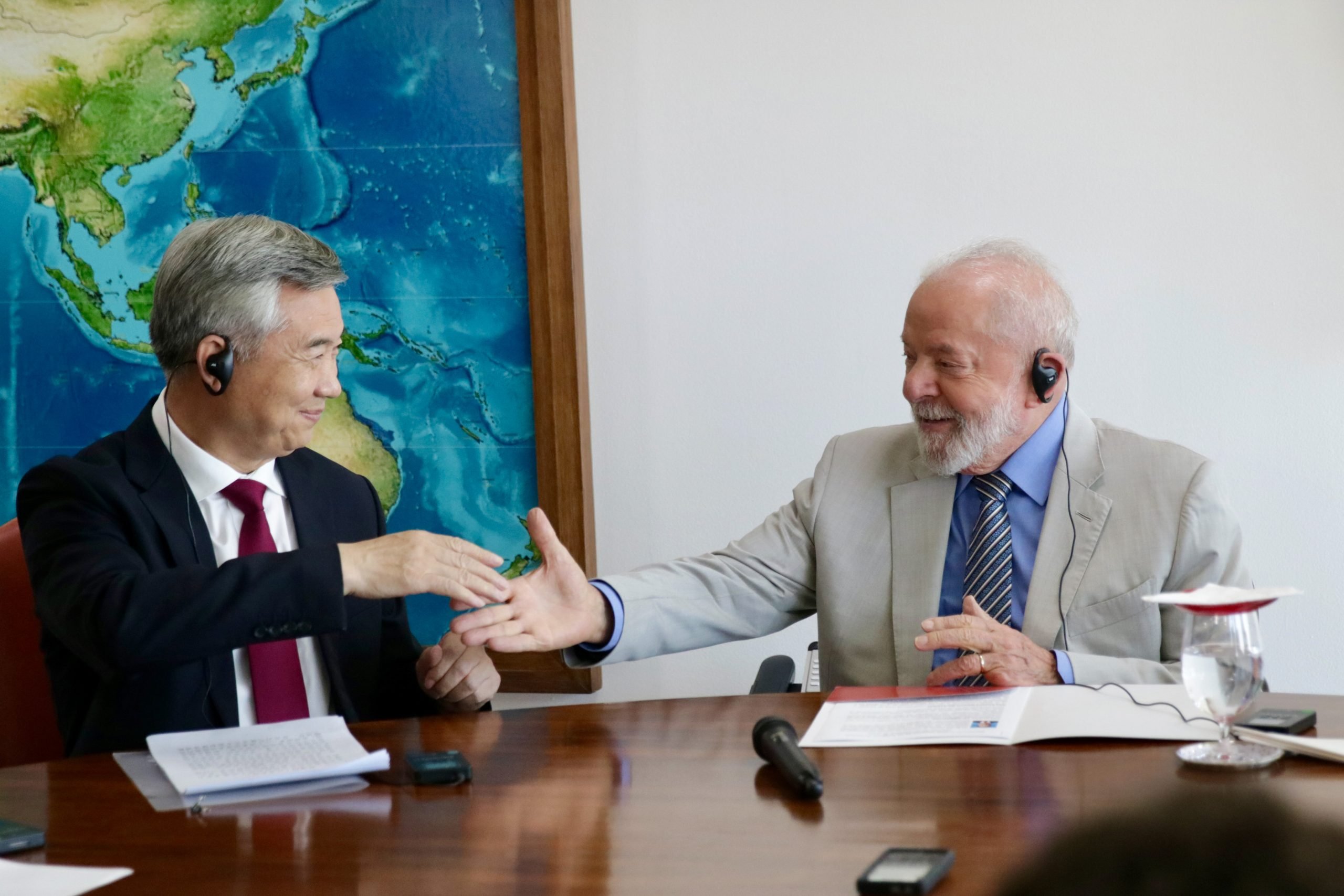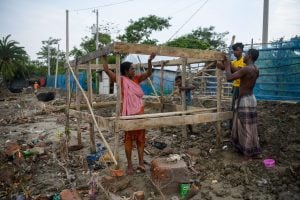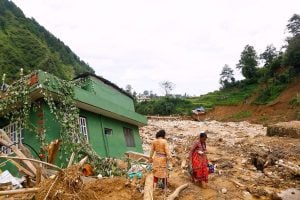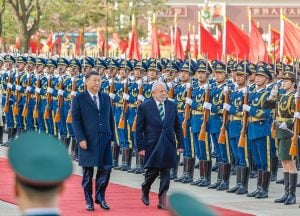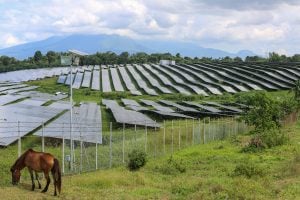This August marked the fiftieth anniversary of diplomatic ties between China and Brazil – two of the most consequential countries for global efforts to avert climate chaos. Their celebrations came against the backdrop of improved relations and strengthening climate cooperation.
As the world grapples with the escalating impacts of climate change, the need for ambitious global cooperation has never been more urgent. How these two climate giants realise their joint ambitions on climate change in the next 15 months could be transformative in this regard.
A full-spectrum climate partnership between China and Brazil – encompassing investment, trade, technical cooperation and capacity development, and focused on driving green economic transitions – could serve as a powerful model for South-South climate cooperation. This could help unblock progress on climate finance, and inject fresh momentum into international climate negotiations, boosting global chances of meeting the goals of the Paris Agreement.
Rebooting finance, from the South
Brazil and China are the vanguard of emerging economies, whose impressive development successes over recent decades have reshaped the world economy, recast the global arithmetic of decarbonisation, and shifted geopolitics.
As well as announcing bold commitments and taking ambitious action on climate at home, both countries have shown leadership and solidarity with the Global South on the world stage, giving muscular support for reform of the multilateral and international financial systems to better reflect southern voices.
Both have also been championing South-South cooperation via new institutions and spaces through which climate cooperation could be rapidly scaled. Among these are the New Development Bank or “BRICS bank”, headquartered in Shanghai and now headed by former Brazilian president Dilma Rousseff; the Asian Infrastructure Investment Bank; the Boao Forum for economic cooperation; China’s South-South Climate Cooperation Fund (SSCCF); and the Belt and Road Initiative, China’s infrastructure investment programme that has now reached around 150 countries – with signals from Brasilia suggesting that Brazil could soon be its next member. With significant headway for increasing investments under the SSCCF and strong moves to green the BRI, we can expect a lot more in that direction.
International climate financing, however, has not kept pace with these tectonic shifts. Emerging and developing economies accounted for more than two-thirds of global GDP growth and 95% of greenhouse gas emissions increases in the last decade. Yet international climate finance remains concentrated in richer countries, with only 16% going to emerging markets, developing economies and the 45 least developed countries in 2021–2022, according to the most recent Global Landscape of Climate Finance report. The insufficient climate finance that has been forthcoming largely fails to meet the most acute needs: during those years, only a sliver (5%) went to adaptation and precious little (3%) reached the climate-vulnerable least developed countries. South-South climate finance in 2023 accounted for under 2% of total flows – although this is likely an underestimate as such financing is not consistently reported.
The floods that devastated the Brazilian state of Rio Grande do Sul in May exposed critical deficiencies in climate finance, but highlighted an opportunity to reshape international responses. The disaster underscored the need for better local capacity to anticipate and handle climate-related extreme events and for nature-based solutions to enhance resilience – two glaring blind spots in current climate finance. With around 90% of the state’s 497 municipalities affected, and over half a million people displaced, the relief and recovery effort requires funding beyond the state and federal authorities’ capabilities. Rebuilding sustainably will depend on significantly increased international climate finance that is more responsive to countries’ requirements, suggesting a need for new approaches.
Climate finance flows under the United Nations Framework Convention on Climate Change are, by design, dominated by Global North donor countries – and for sound reasons, given their relative economic strength and the “carbon debt” incurred in their high-emissions development. This reflects the structure of the international climate regime, of which the principle of “common but differentiated responsibilities” (CBDR) has been a cornerstone and will remain sacrosanct for emerging and poorer countries.
This means rich countries’ obligation to provide financial support to developing countries’ effective implementation of the Paris Agreement remains core to any agreement that may be reached on a new climate finance goal at the upcoming COP29 summit in Azerbaijan. Developing countries legitimately complain about rich countries’ failures to deliver on promises of finance, although it should be noted that this is a failure in the aggregate, with many countries meeting and even exceeding their fair shares.
That notwithstanding, we have reached a point where progress cannot be held hostage to this fraught political dynamic.
The formalisation of a greater role for emerging economies and of South-South cooperation would reflect a growing reality in the world, and can help deliver on two core objectives at COP29: a change of magnitude in the amount of climate financing provided, and a greater targeting and responsivity of that financing to the needs of developing countries.
Crucially, this would be consistent with the principle of CBDR. Recognising emerging economies’ potential voluntary contributions as investors, trade partners and facilitators of transition financing does not in any way deflect from the moral obligation for rich countries to provide more concessionary public financing for climate action in the Global South. These are two distinct layers of the multi-level climate finance stack needed to deliver the desired quantum leap expressed by the New Collective Quantified Goal on Climate Finance (NCQG) that must be agreed on at COP29.
China and Brazil uniquely positioned to lead
At a time when economic and geopolitical headwinds are making ambitious agreement on finance more difficult, China and Brazil are uniquely positioned to set a new course for international climate finance, given their ambitious leadership, robust international advocacy and clout with Global South countries.
A recent ministerial meeting on climate change in Wuhan set the tone: alongside South Africa and India, as part of the BASIC bloc of newly industrialised countries, both Brazil and China reaffirmed their commitment to multilateralism and low-carbon development. Minsters also emphasised the need for urgent action and a new collective goal for climate finance, moving from billions to trillions of dollars annually to meet the goals of the Paris Agreement.
As a leading manufacturer and supplier of low-carbon energy technologies, China is uniquely positioned to drive investments that accelerate the adoption of affordable solutions worldwide, thereby facilitating green transitions. China is already contributing to this effort across Latin America and other regions. Meanwhile, the current Brazilian government is proposing a new industrial policy and an ecological transition programme focused on enhancing resilience, promoting environmental sustainability, and advancing energy transition in all its productive sectors.
Beyond financing, there is also tremendous value that the two nations can contribute to support partner countries in the Global South, particularly in advisory and technical services and technology transfer, as well as in developing and implementing transition plans and co-creating investment opportunities. This can – indeed, should – be done in a way that complements existing efforts by richer donor countries, and keeps the door open to finance from other sources.
China and Brazil have a historic opportunity to demonstrate a novel, more robust model of South-South climate cooperation that, beyond financing, is about solidarity in the face of shared challenges, and shared commitment to net-zero economic transitions. Such a partnership would signal a robust corrective to current biases and shortcomings in international climate finance. It could help pave the way to a successful outcome at COP29, create a more resilient, representative and politically stable international climate finance framework, as well as building momentum and ambition on the road to COP30 in Brazil in 2025.
